Why Cookies Are the Ultimate Symbol of Seasonal Goodwill
For this Bosnian baker, trays of pastries symbolize the hometown she fled—and support for others missing home.
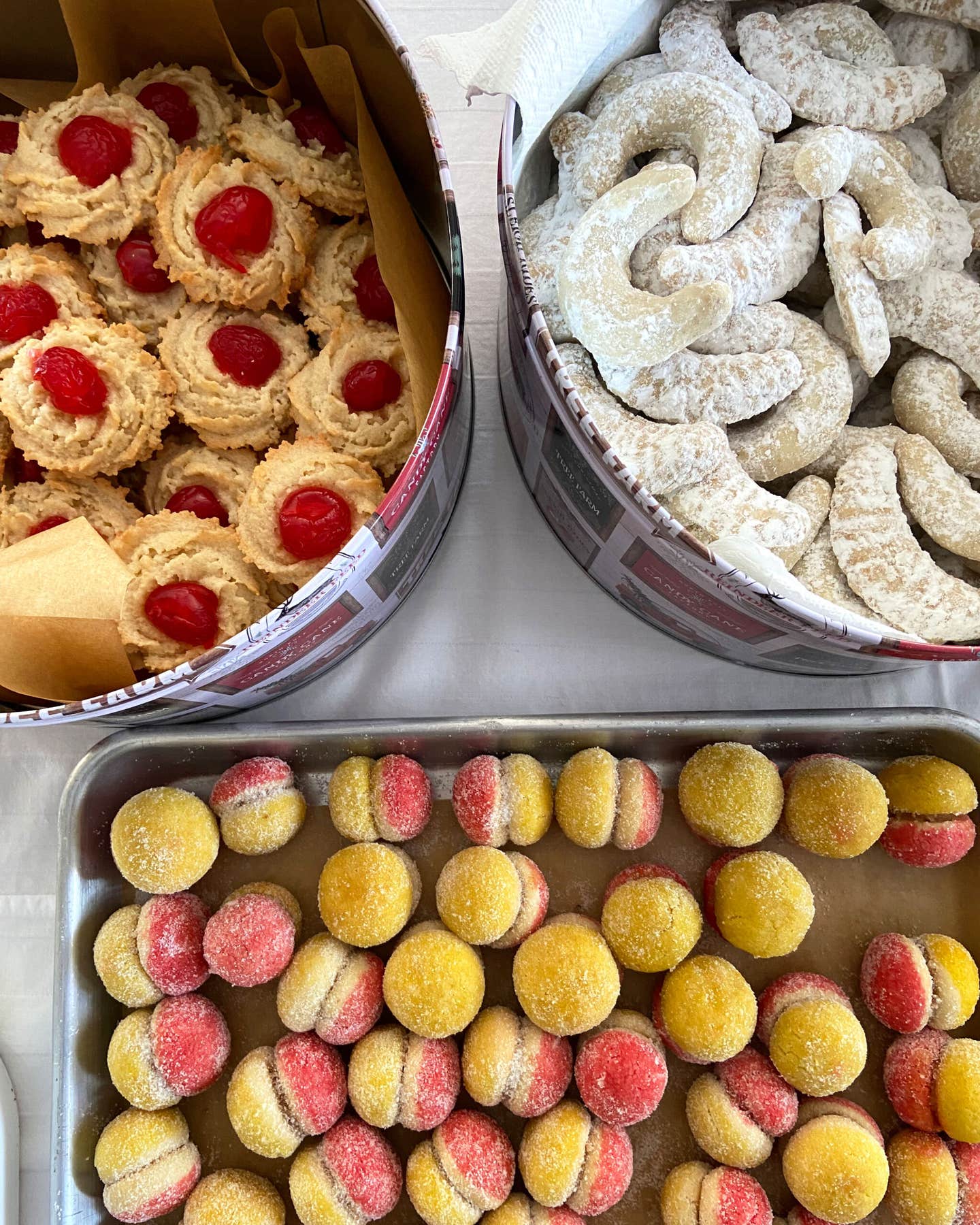
Food is more than what’s on the plate. This is Equal Portions, a series by editor-at-large Shane Mitchell, investigating bigger issues and activism in the food world, and how a few good eggs are working to make it better for everyone.
“These are vanilica, a butter cookie with jam inside,” says Mersiha Omeragic, the 47-year-old owner of Yummilicious Café & Bakery in Upstate New York, as she opens a tin filled with the sugar-dusted pastries. “These have rosehip from the Bosnian store,” referring to one of many corner grocers that supply specialty goods in her community. Every winter, Omeragic spends the last few weeks of the year ardently baking hundreds of Balkan-style cookies for her customers. Zerbo kocke, kresenti, oreshki, oblatna, mađarica. (To be inclusive, she even whips up tricolor rainbows, as some residents in her culturally diverse neighborhood are of Italian American heritage.) “Cookies were always a tradition for winter holidays,” she says about her hometown of Travnik in Bosnia and Herzegovina. “Doesn't matter what religion, everyone will have some of these on the platter. The whole Balkans—Bosnia, Croatia, Serbia—starts baking at Advent so they can have not just for the house but to share with neighbors. That's what I loved before the war.”
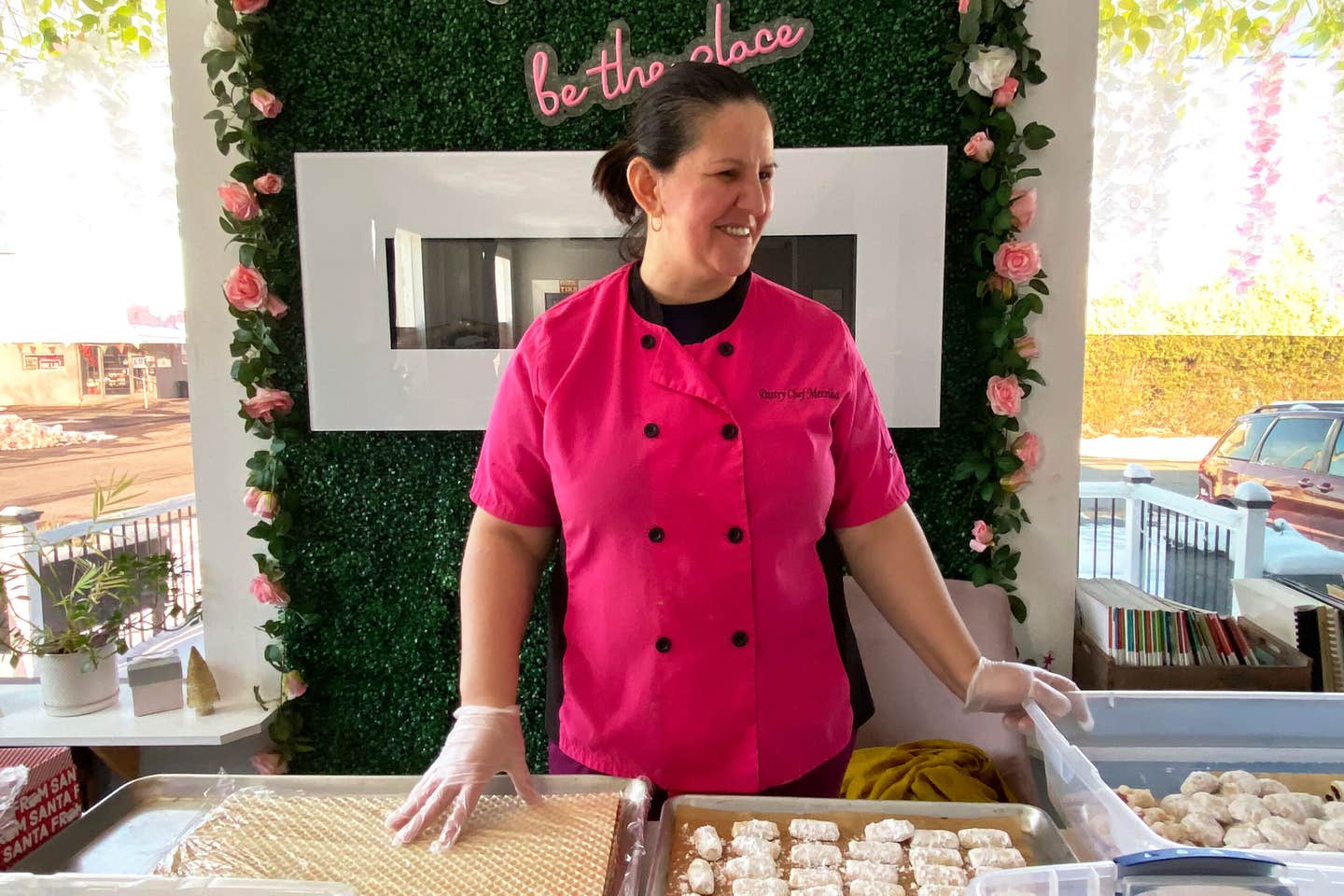
As a teenager, Omeragic fled Bosnia with her mother and younger sister in 1994, at the height of a brutal conflict that devastated her homeland. The family found sanctuary through the Lutheran Immigration and Refugee Service in Utica, New York, a scrappy manufacturing town with an aging population that didn’t exactly welcome newcomers. She admits struggling with the intolerance much of the region’s burgeoning immigrant population encountered at the time. (In the ensuing decades, refugees have transformed the local culture and revived the city’s arson-scorched neighborhoods.) “My grandma was still alive then,” says Omeragic, who worked factory jobs before earning a college degree and teaching English as a Second Language courses at the Boards of Cooperative Educational Services (BOCES). “She survived two wars. And she was a very wise woman. I told her, ‘People here keep screaming at me to go home, saying stuff about my accent. I can't handle it.’ And she said, ‘What? I thought you were a tougher cookie. Build your life.’”
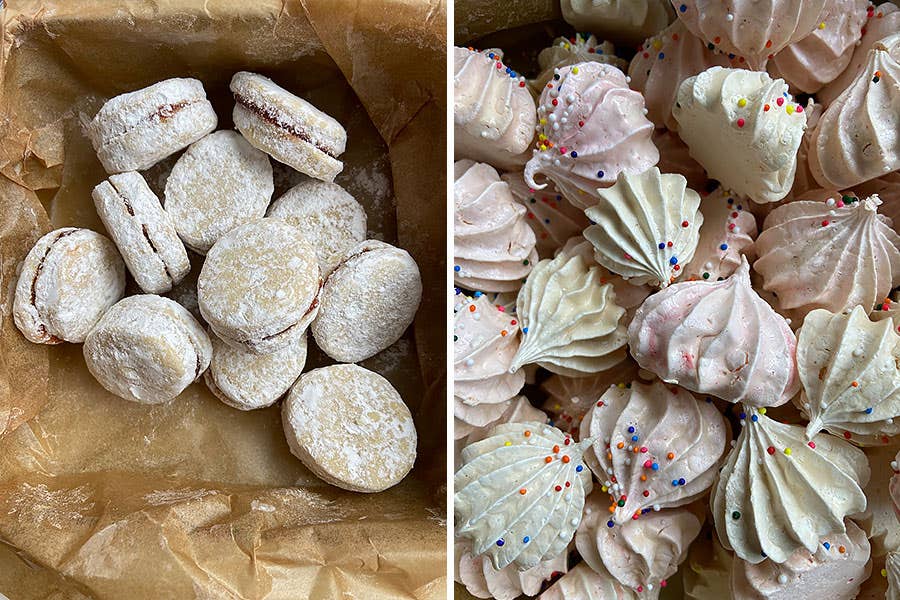
Recalling her grandmother’s advice, Omeragic adjusts her flour-dusted apron and holds her palm over her heart. “Once you leave your country, it's a constant fight to prove that you’re worth something. You are a refugee and you always will be a refugee. You have that label, it doesn't peel off, just like the sticker under the plate. And that's something that we all deep inside deal with—trying to find your place, you know?” She gestures around the dining room, a cheerful space with walls covered in silk flowers, suede café chairs, and a mannequin wearing a festive pine bough skirt studded with glass ornaments. “But this is our place and this is representing us.”
Cookies first came to America in the late 17th century, when Dutch settlers introduced decorative pastry molds and cutters from Holland. (The word cookie is derived from the Dutch koekje, or little cake.) The English carried jumbles and gingerbread across the Atlantic; Scots brought shortbread; Moravians came with their Nazareths, or sugar cookies; enslaved Africans baked benne (sesame) wafers and groundnut cakes. (Later waves of immigration would result in the proliferation of rugelach, mandelbrot, pizzelle, polvorónes, fortune cookies, and hojarascas.) Early Americans quickly developed the practice of exchanging cookies during holiday celebrations; in 1796, a recipe for “Another Christmas Cookey” appeared in American Cookery by Amelia Simmons. And all varieties eventually became a vehicle for supporting social change—perhaps most famously in December 1917, when the Girl Scouts’ Mistletoe Troop of Muskogee, Oklahoma first baked sugar cookies to sell in their high school cafeteria as a service project. Now, many organizations engage in nationwide cookie drives.
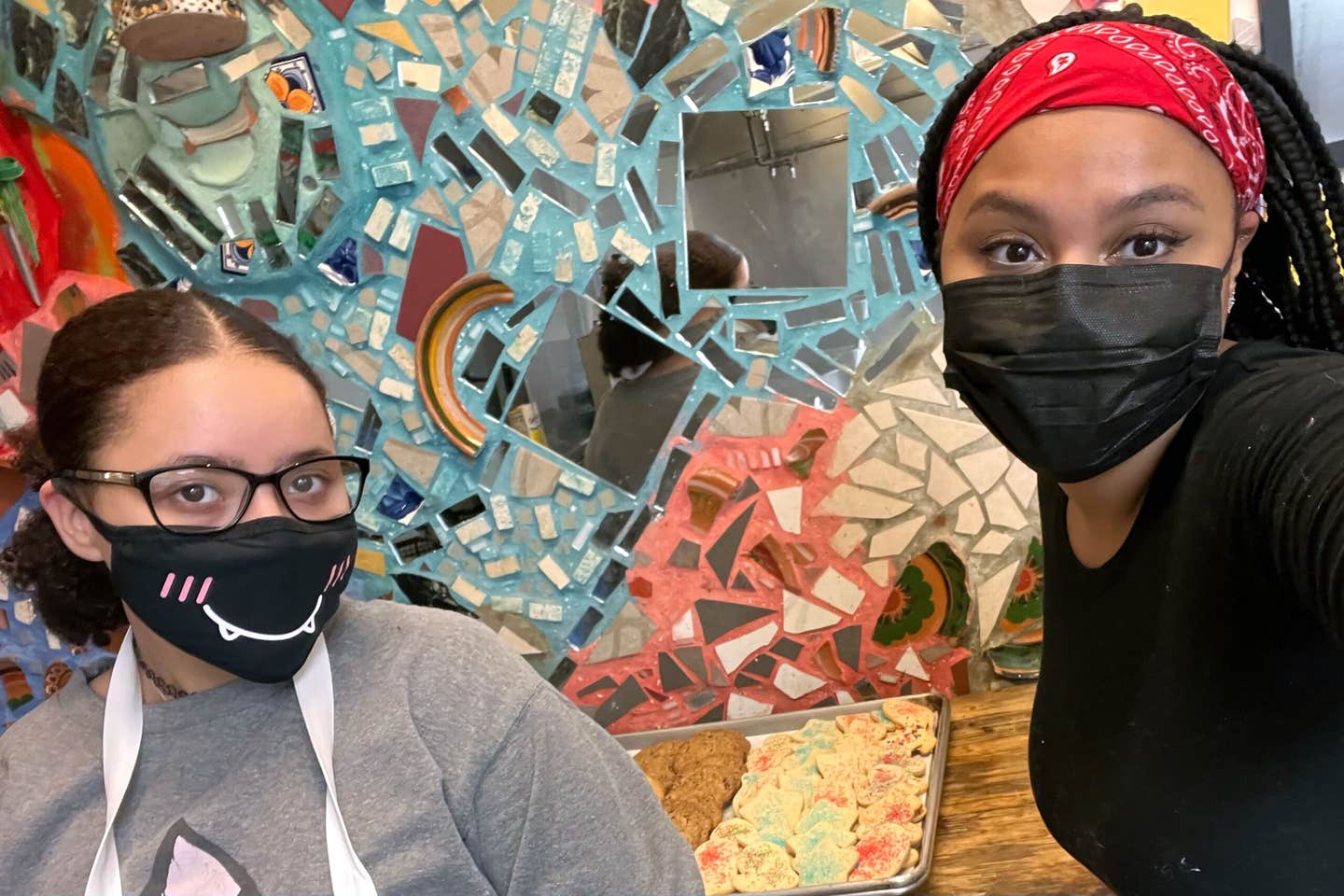
Throughout the year, Bakers Against Racism mobilizes a national baking force for awareness-building actions—including voting registrations and women’s rights marches—with sales of snickerdoodles, chocolate crinkles, and espresso-black pepper shortbread. During this busiest cookie season, many regional organizations also raise funds for food-based initiatives. Volunteer bakers Kabriana Kendall and Jacky McNiff-Beattie piped buttons on grinning gingerbread men for the People’s Kitchen Philly, a collaborative that distributes free meals to underserved neighborhoods in Philadelphia. Lets Make a Change held the first annual Christmas Cookie Walk in Euclid, Ohio to support its Youth Culinary program, which teaches pre-school children life skills. Goldie’s Rotisserie food truck on Martha’s Vineyard raised awareness for Friends of Family Planning with their holiday cookie boxes. And Homeboy Bakery in Los Angeles, a social enterprise that advocates for formerly incarcerated and gang-involved individuals, sold out their entire stock of almond horns and coconut macaroons.
In Utica, Yummilicious is a result of the Omeragic family’s resilience. After applying for a mortgage and maxing out multiple credit cards, Omeragic and her husband Hajrudin, a professional cook, opened the doors of their bakery one month before the pandemic hit in 2020. They survived the worst of lockdown by taking orders from customers who discovered her celebration cakes on social media. More traditional pastries and desserts, based on recipes introduced to Balkan countries during centuries of occupation by the Ottoman and Austro-Hungarian empires, now fill the bakery’s display cases. Strudel, custardy krempita, baklava, krofne (donuts), uštipci (fried bread), poached apple tufahija. Omeragic’s favorite is the dainty walnut-stuffed hurmasica cookies soaked in syrup, a legacy of her grandmother, who passed away in 2015. “Hers were perfect,” she says. “Crunchy, but melt in the mouth.”
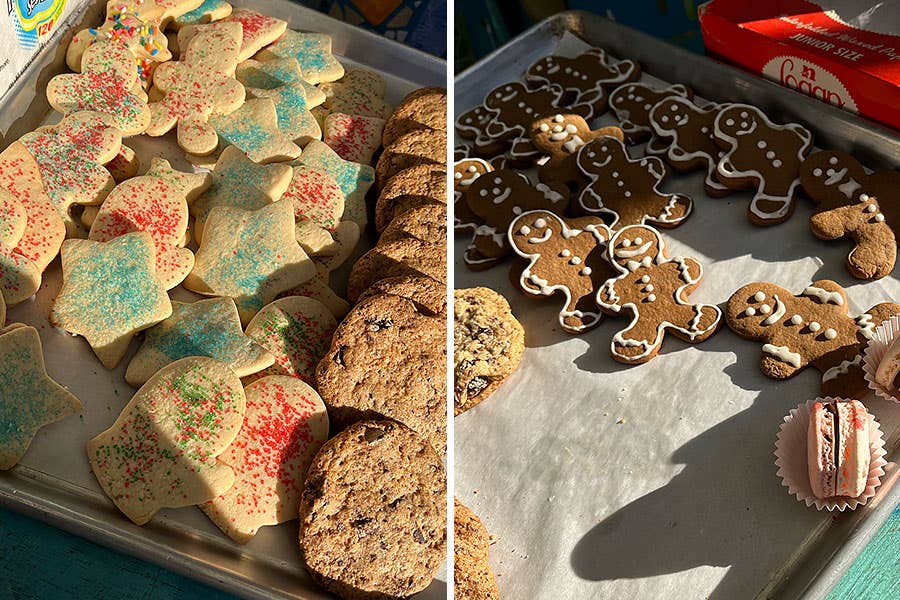
Omeragic always donates cookies to local chapters of Hospice, Ronald McDonald House, and the Bosnian Association of America, and also informally helps out new arrivals who might need a welcome treat during their first frosty upstate winter. “We use the word ‘halal’ for giving something without accepting anything in return,” she says, surrounded by tubs of cookies ready for cellophane wrap and ribbons. Her husband cuts the slabs of mađarica and rainbows into neat rectangles, while their four children stack dozens on overflowing trays. “My grandma used to say whatever I give in halal, it will come back ten times more.”
For so many around the world, cookies symbolize that spirit of giving. In all shapes and flavors, they’re a bite-size emblem for generosity, solidarity, and seasonal joy.
Keep Reading
Continue to Next Story










